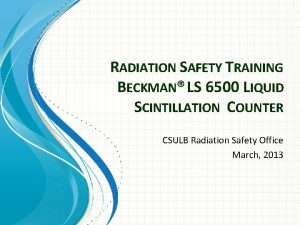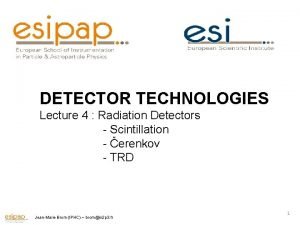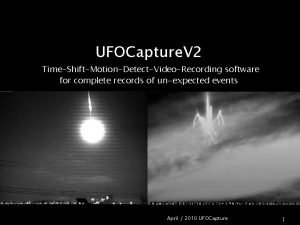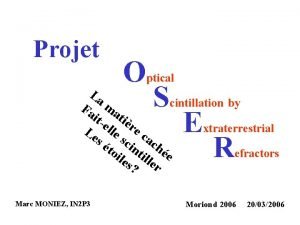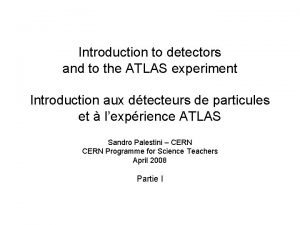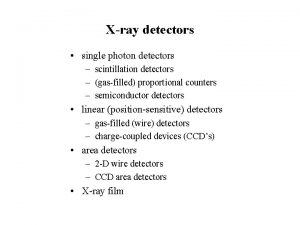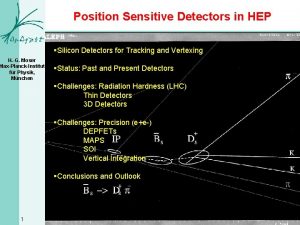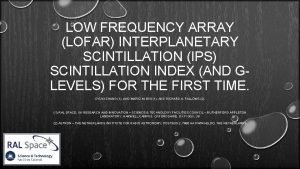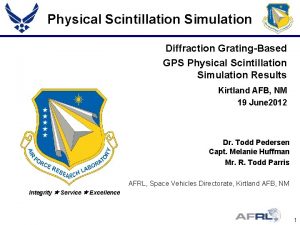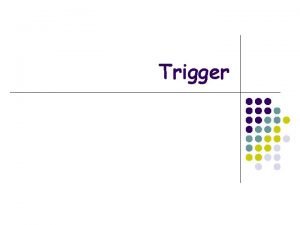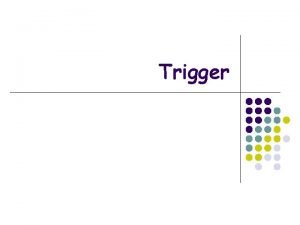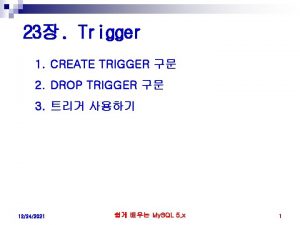Position sensitive scintillation detectors for the trigger system



![KLEM [Kinematic Lightweight Energy Meter] q The main objective of the KLEM instrument KLEM [Kinematic Lightweight Energy Meter] q The main objective of the KLEM instrument](https://slidetodoc.com/presentation_image/d004d4d9e2c822e4d31b6eb67bcb4374/image-4.jpg)







- Slides: 11

Position sensitive scintillation detectors for the trigger system in the space experiment NUCLEON Supervisors: Anatoliy I. Kalinin a Students: Irina Cioara b Alexandra Chilug b a Joint Institute for Nuclear Research, Dubna, Russia b University of Bucharest, Romania Dzhelepov Laboratory of Nuclear Problems

Cosmic rays Were discovered by Victor Hess in 1912 q They are energetic charged subatomic particles, originating from outer space. They may produce secondary particles that penetrate the Earth's atmosphere and surface. q The NUCLEON experiment is aimed at studying cosmic rays that have energies between 1011 - 1014 e. V. q The TUS experiment is aimed at studying cosmic rays that have ultra high energy, above 5*1019 e. V. The used method is an indirect one, that does not remember the primary particle.

NUCLEON o The main idea of the NUCLEON project is to design and to create a scientific device with large aperture and a relatively light weight for measure elemental spectra of cosmic rays in a wide energy range E ~ 1011 - 1014 e. V. o The method is based on event by event measurement of spatial distribution of the charged and neutral secondary particles which were produced in the inelastic nuclear interaction in the target of the detector and have passed through layers of silicon micro strip detectors and thin converters to produce e- e+ pairs of the secondary gammas. This technique is known as KLEM (Kinematic Lightweight Energy Meter).
![KLEM Kinematic Lightweight Energy Meter q The main objective of the KLEM instrument KLEM [Kinematic Lightweight Energy Meter] q The main objective of the KLEM instrument](https://slidetodoc.com/presentation_image/d004d4d9e2c822e4d31b6eb67bcb4374/image-4.jpg)
KLEM [Kinematic Lightweight Energy Meter] q The main objective of the KLEM instrument is direct measurement of the elemental energy spectra of high-energy (1011 -1016 e. V ) cosmic ray in space. q The basis of the KLEM method is energy determination by measuring the number and the angular distribution of secondary particles produced in a target. q The energy of a primary particle is calculated using the following function: Ni= number of secondary particles registered in strip i ηi= pseudorapidity xi= distance of strip i from the point of intersection of the extrapolated primary particle trajectory with the detector plane h= the distance between the detector plane and the midle of the target

KLEM Advantages of KLEM method: q a large aperture q a lightweight device (it does not need a thick absorber) q has easy read out of information (thanks to the use of silicon microstrip detectors) q long duration exposures in orbit q measurement of an individual energy spectra with single technique over a very wide energy range

NUCLEON Structure

Trigger system The goal of the trigger system is the selection and rejection of data flux to a limited volume that can be transferred to the ground data acquisition and control center for further offline analysis. COMPARATOR P-16 P-32 MPMT P 1 X Fibers PMT+ IVN A PMT + IVN A P-16 MPMT Y PMT + IVN Block diagram of the plane P 1 A A

• Scintillator detectors - basic instruments for registration of cosmic rays and other radiations. Amplifier PMT Scintillator A CC COMPARATOR Fiber The scintillator converts the falling radiation into a short pulse of visible light. The photomultiplier converts the collected light from the scintillator into electrical signal and amplifies it as much as possible. In the NUCLEON project vacuum photomultipliers are used.

PMT and Si. PM Vacuum Photomultiplier Silicon Photo. Multiplier

The general equivalent circuit of the Si. PM Advantages for Silicon Photomultipliers: q q q Applicability in many different fields (high energy physics calorimetry, astrophysics, medical imaging) Low voltage supply (<100 V) Insensitivity to magnetic field High gain ~ 106 Better one-electron resolution

Thank you for your attention!
